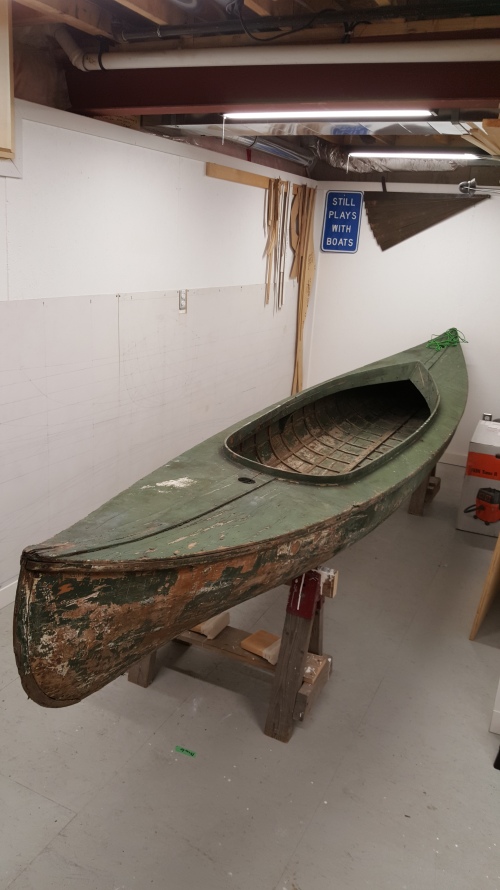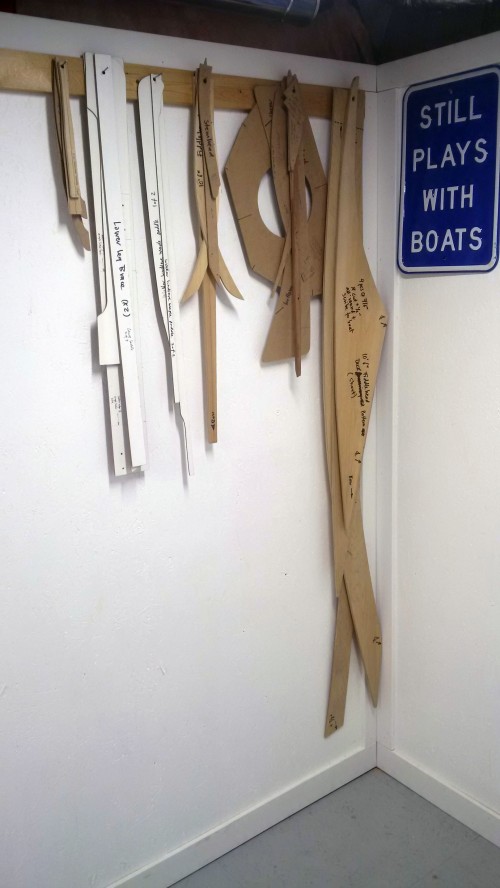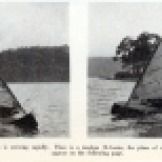So, back in July 2013, I told you about putting new canvas on “Clementine,” my 1937 Old Town canoe. As you know if you’ve read previous posts, later that year I left Peterborough and took on a new job just west of Toronto. The canoe moved with me, but didn’t get any further because I had to finish the basement first.
In April 2016, I completed the new shop space. By July, I had moved my 1880s Ontario Canoe Company decked sailing canoe “Pip” into the shop. Then, there were a couple of writing projects for WoodenBoat magazine. Then, there was a historical plaque writing project for the Ontario Heritage Trust (more in a future post).
Then, there was a book. I’ve wanted for years to write a book, but I didn’t know where or how to start. I didn’t want to write a manuscript first and then try to find a publisher (worked for J.K. Rowling, but she’s out of my league). In the middle of 2016, I came across a call for book proposals put out by the American Association for State and Local History. I sent in two ideas: one for a book about maritime museums, and the second for a book about developing museum exhibits. The first one turned into a chapter for a book by another of their authors (more in a future post) and the second one turned into a book of my own. 19 months and 65,000 words later, Creating Exhibits that Engage: A Manual for Museums and Historical Organizations is done and it will be out next month.
So, how long is my canoe (project)? 17′ or 5 years, depending on how you count. I’m determined to get “Clementine” in the water this summer, so I’ve picked up where I left off with the re-canvassing. The new canvas needed to be trimmed down to the top of the planking. 
Normally this is quick work, but I used epoxy so it required a sharper blade and a bit more force.

After sanding the epoxied canvas with 150 grit, I dry-fitted the old gunwales to check the trimming of the canvas.

The starboard gunwale was fine, but the port one had broken when I took it off in 2013. In the intervening years, the broken piece had disappeared so I needed to replace it. Here’s the starboard bow:

And here’s the port:

The gunwales are spruce, and rabeted on the back to fit over the top of the planking, which is cut down from the ends of the ribs. The tricky part about making a new end is that it curves both in plan and in profile, and it’s too short to steam, so the whole thing, including the rabbet, has to be carved out. The first step was to make a pattern from the starboard gunwale:

I traced it onto some scrap white cedar and sawed it to shape.

I cut a long scarph in the port gunwale, being careful to miss the existing screw holes:

The port gunwale was then clamped back on. I fitted pattern in place, marked the scarph I had just cut and trimmed the template to match. Then, I resawed a piece of clear spruce to about 1/4″ wider than the finished width and bandsawed it to the pattern shape, including the scarph at the end:


To make the rabbet, I rough-cut it with a Fein multi-tool and followed up with a chisel and a rabbet plane:



The new gunwale is still a little too large, so the next step is to shape and taper the inside, adjusting the rabbet to match as I go.







































































































